The most exciting part of the day at Spruce Pine Montessori School is when the truck arrives to empty the porta-johns. At that point in the afternoon, the kids abandon their toy dinosaurs and monkey bars, throw up their hands and yell in excitement as they run to watch the truck do its work. It’s lucky that they find something to be so joyful about, Principal Jennifer Rambo said on a recent sunny afternoon, because things have been a mess for the past seven weeks.
The flooding that devastated Western North Carolina during Tropical Storm Helene laid waste to communities all around the region, spitting up great torrents of mud and washing away homes, cars, and people. The landscape along the creeks and mountainsides has been forever changed.
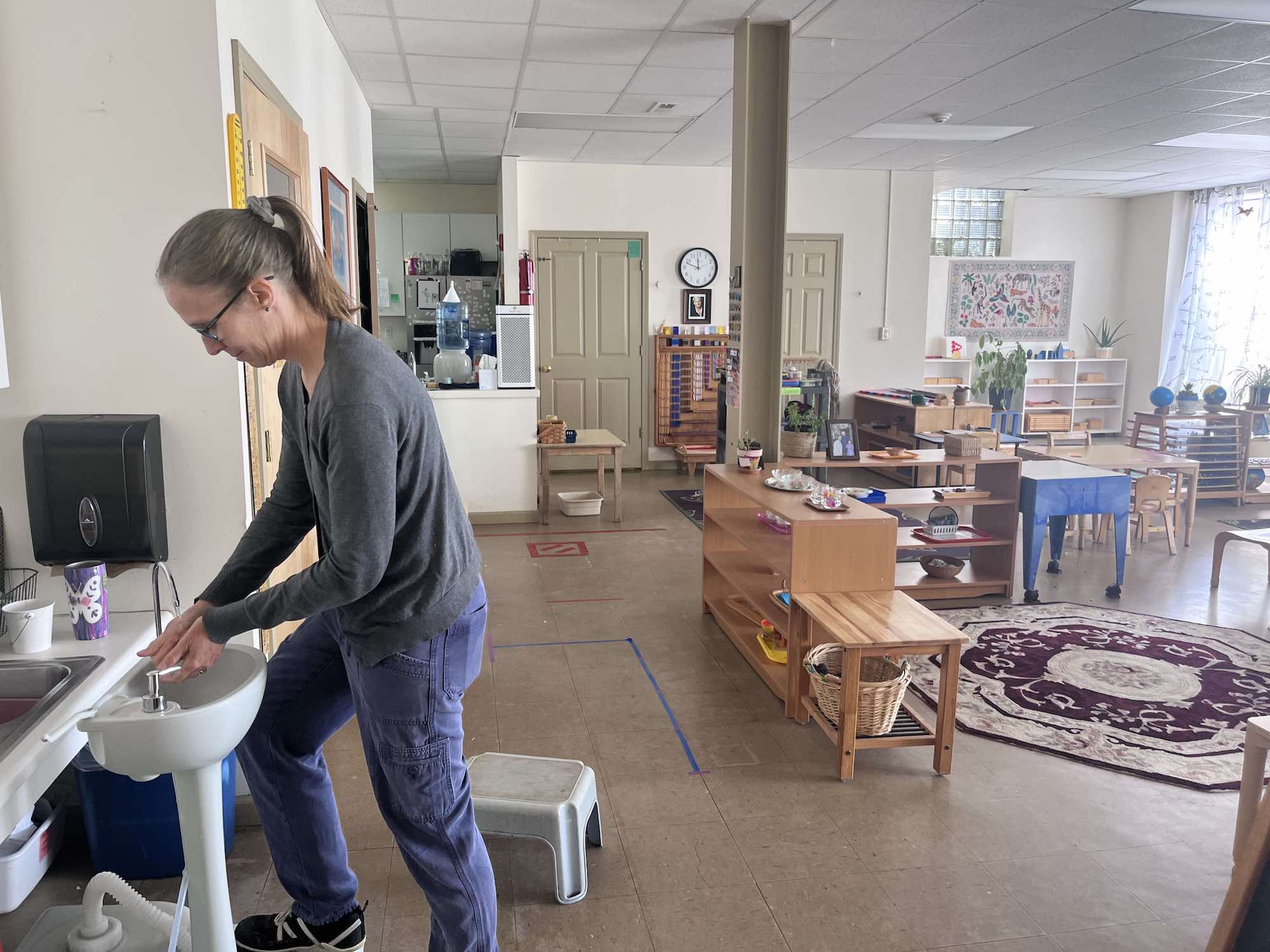
Beyond the fallen trees, sliding hillsides and damaged buildings, Helene took out critical infrastructure, like internet and electricity, water and sewer. Everyone would have liked more time to get things in order, but working families were desperate for childcare and the desire to resume classes was too great. “We had to get open,” Rambo said. “The kids needed some routine and structure and consistency, and families needed to go back to work.”
Although folks in Spruce Pine were told Thursday they could finally stop boiling water before using it, the school still can’t flush its toilets because the sewers remain a mess. In addition to two portable toilets (and special seats so the smaller children wouldn’t fall in), it has had to buy water by the barrel and spend $600 to install portable hand-washing sinks. The bills continue adding up: $360 per week for the johns and $350 every time they need emptying. Everyone has had to adjust to these changes and more, even as they’ve dealt with similar problems at home.
It’s been that way everywhere. The storm killed 103 people throughout Western North Carolina and surrounding areas. Many more were injured. All told, the wind and the water damaged as many as 126,000 homes, and dozens of roads and bridges simply washed away.
Helene also decimated more than two dozen water utilities. For weeks after the storm, people had to boil anything that wasn’t poured from a bottle, and many of them drew from creeks and ponds just to flush their toilets. Folks in Asheville, where taps ran dry for three weeks, were told just this week that their water is safe to drink without boiling it first, but thousands of people served by 16 utilities still deal with sketchy water, low pressure,and other frustrations. In an effort to make their lives a little easier, officials dipped into a $273 million relief package to dot this end of North Carolina with 650 portable toilets and 15 “community care stations” with showers and washing machines.
Asheville was lucky enough to have upgraded its reservoir last year, something that prevented even worse flooding and allowed the region’s largest city and the communities that rely upon it for water to recover sooner than they otherwise might have. But for towns like Spruce Pine, the financial and engineering challenges of repairing their water systems are as formidable as the hurricane that broke them.
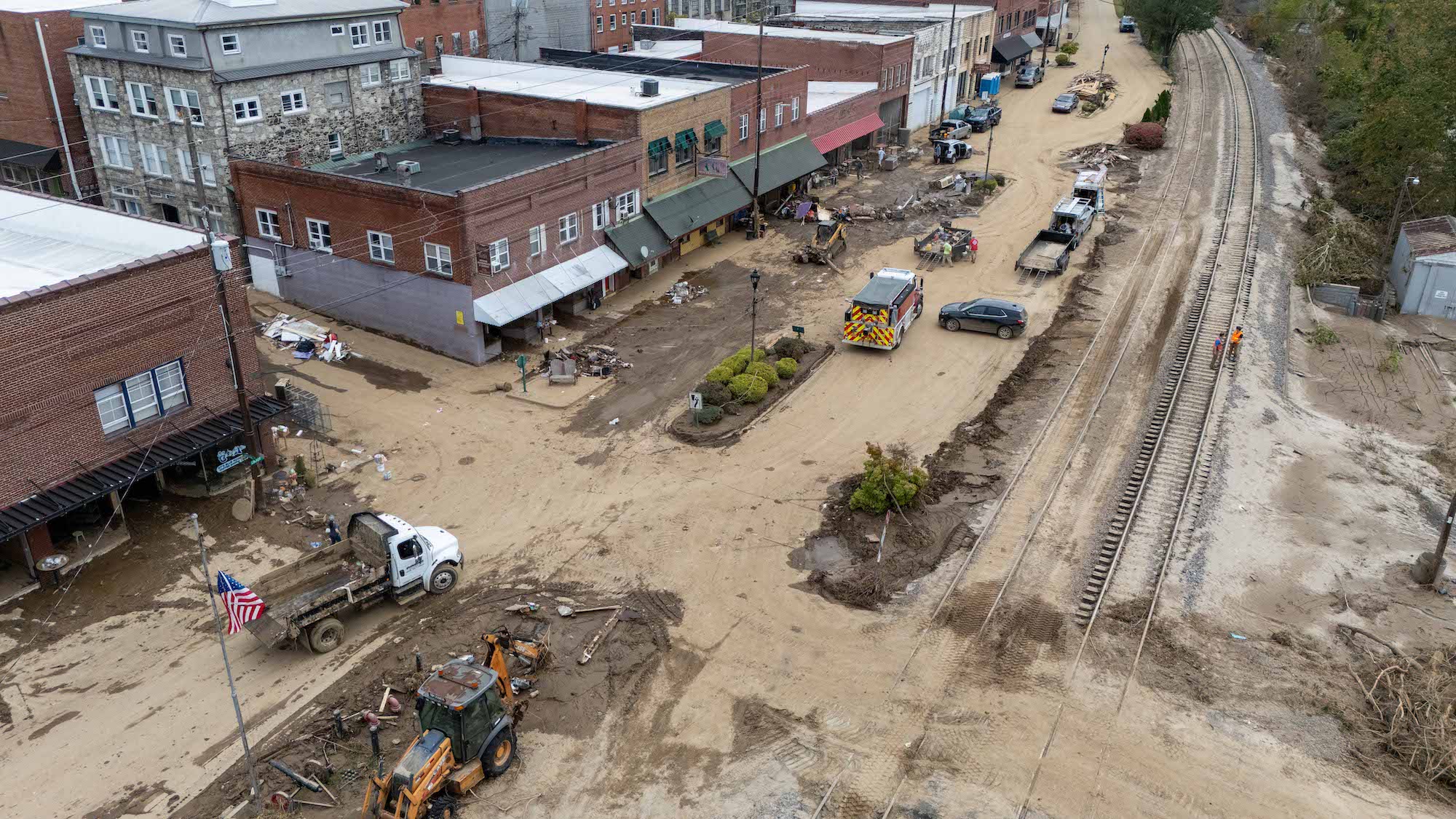
The water that flows into the North Fork Reservoir, which serves Asheville and the towns of Black Mountain and Swannanoa, always ran clear and clean from its headwaters high in Pisgah National Forest. But mud and debris have turned it murky brown and damaged much of the equipment needed to pump it. Crews have worked around the clock to set things right, reconnecting pipelines in record time and drawing muck from the lake.
Repairing municipal water systems leveled by a storm that washed away distribution lines, overwhelmed intakes and inundated treatment plants is no easy feat. The challenge is acute in mountain communities, where geography is a hassle. Much of the infrastructure required to draw, treat and distribute water often sits alongside reservoirs, placing them squarely in a floodplain when the torrent arrives and increasing the likelihood of damage. Reaching anything needing attention can take days or even weeks because the lines that carry water to customers meander through valleys, over ridgelines and along roadways, many of which remain impassable. Spruce Pine Water & Sewer has restored service to 90% of its 2,000 or so customers but can’t do much for the rest of them until the roads are fixed.
The sewer system remains a mess too. Town manager Darlene Butler has asked residents to conserve water as she works with county officials and the Federal Emergency Management Agency to erect a temporary treatment facility. The equipment is only now arriving and will, at best, be a Band-Aid for a multiyear fix. “We had a lot of damage there, so we’re trying to encourage people not to use a lot of water and put it into our sewer system,” she said.
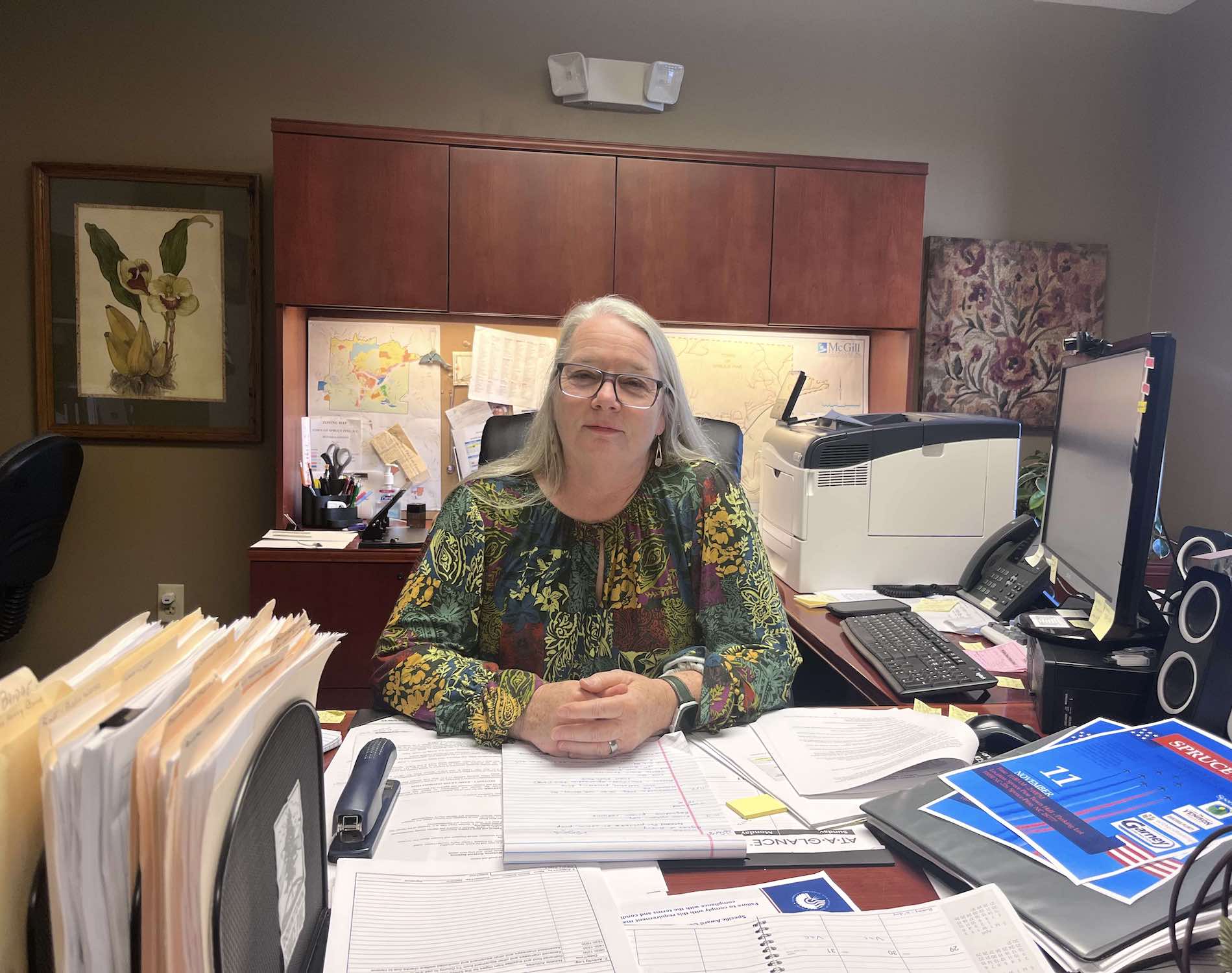
A lot of these utilities struggled even before Helene. In many Appalachian towns, the companies that once paid to maintain water and sewer systems have shut down or moved on, and shrinking populations generate less revenue to keep things shiny and new. This is endemic throughout Appalachia. Residents in McDowell County, West Virginia — where one-third of families live in poverty — have for example given up on the often discolored water that flows from their taps and buy it by the case instead. Pipes in Martin County, Kentucky lose about 64 percent of what flows through them, a problem that started 24 years ago when a toxic coal slurry spill damaged them. The burden of these failures falls on customers who must adapt to the situation even as their rates climb. (Rates in Martin County, North Carolina, to offer one example, are among the nation’s highest.)
Yet other systems, particularly those in tourist towns, struggle to keep up with rapidly growing populations. The challenges are compounded by the difficulty of running new lines in the mountains and maintaining the complex pumps needed to maintain pressure over ridgelines. “This is a really, really great place to live,” said Clay Chandler, Asheville’s water resources information officer. “It’s beautiful. The people are amazing. But, man, it makes it hard to operate a water system.”
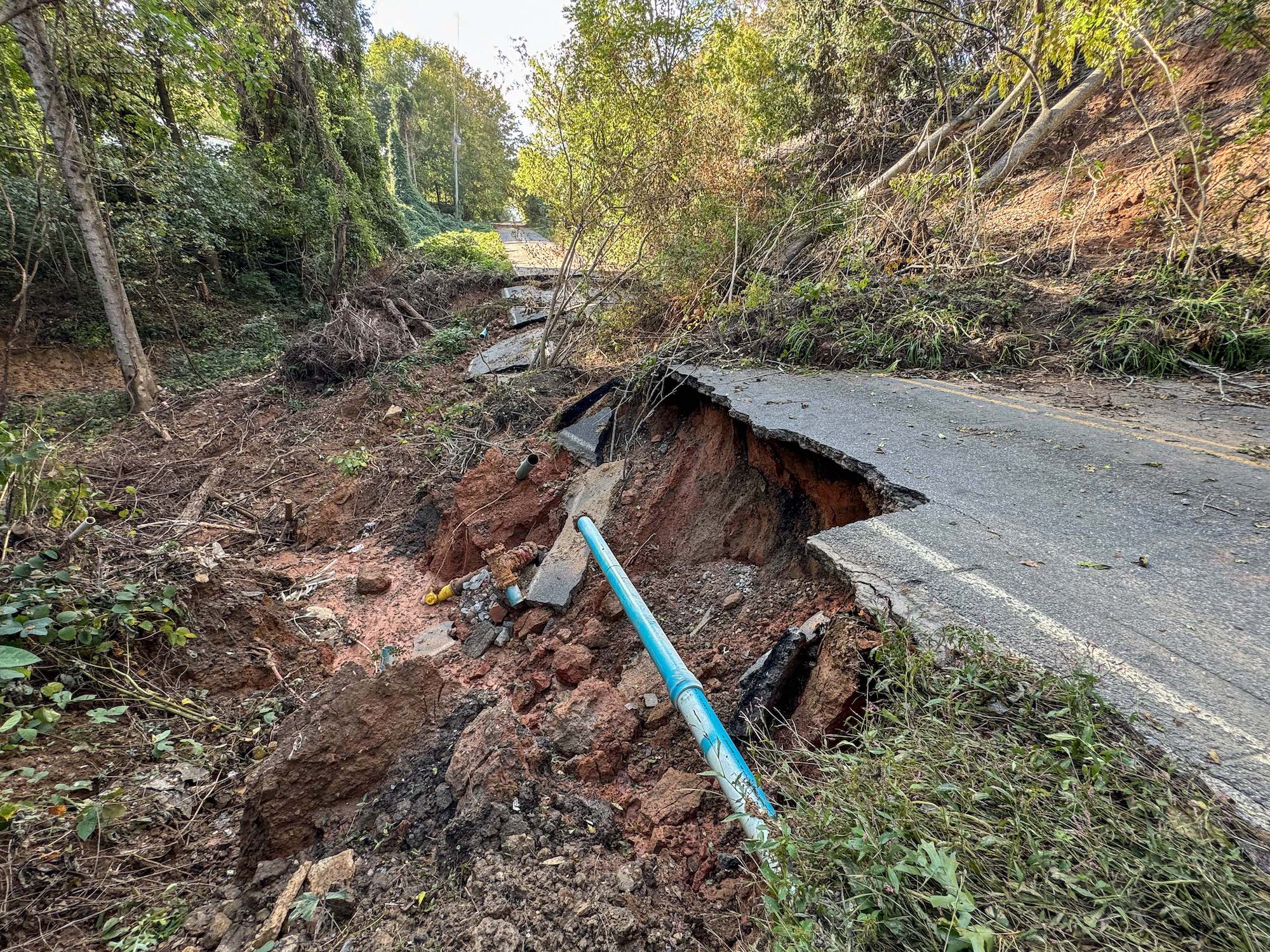
Spruce Pine’s system is so old that Butler has no idea when its pipes were laid, though she guesses it was 60 years ago. The pump station, recently upgraded with money from the American Rescue Plan, was built in 1967. It has seen overhauls as things broke, but rural utilities rarely make wholesale improvements because they are expensive and disruptive. “I think, like most small towns, we’ve struggled for the funds to be proactive instead of reactive,” Butler said.
Even as communities deal with the aftermath of so much deferred maintenance, others are facing the inescapable fact that rebuilding on a floodplain may no longer make sense. Spruce Pine is banking on hazard mitigation funding from FEMA and help from federal officials to move its wastewater treatment plant to higher ground.
The work needed to fully, and permanently, restore water and sewer service in these communities will by most estimates take two to four years and cost many millions of dollars. Meanwhile, crews continue playing whack-a-mole as aging lines break. Another one gave way in rural Yancey County last week, sending a geyser dozens of feet into the air.
About 2,000 people live in Spruce Pine, a busy place with water-intensive businesses that have been impacted by the disruption. There’s the mine that produces some of the purest quartz in the world and sent heavy equipment to help restore service. There are the restaurants and kitschy attractions that drive a burgeoning tourism industry. And then there are the two state prisons, each of which holds about 800 people (who were relocated after spending a week in flooded cells) and, like prisons everywhere, burden the local water and sewer systems.
The ongoing crisis also has made providing basic services a challenge. Blue Ridge Regional Hospital, which serves three counties, has long had a standby power supply but scrambled to cope with losing water. Trucks haul in what’s needed, and enormous bladders collect what’s been used. “We had backup generators to supply the hospital in case of an emergency,” said Alex Glover, chair of the hospital’s board of directors. “But we never dreamed we would lose water and sewage capabilities, and we lost them all at once.”
With water in short supply, the volunteer fire department banned burning the yard waste, brush, and other debris people have been clearing for weeks. “If we had a big fire and we needed to take several thousand gallons or more out of the system, we don’t really know for sure how long that supply would hold up,” said firefighter Chris Westveer.

The department has experienced some close calls. Westveer recalled one frightening night when wiring in a damaged home sparked a fire. The road had been washed away, forcing crews to approach on an all-terrain vehicle. With no water on tap, they drew what they needed from a river and hoped the wind wouldn’t spread the flames beyond their ability to fight them.
Such strains on public services, already scarce throughout mountain communities, compound the stress felt by those who have gone nearly two months without reliable water. People in Banner Elk, a community of 1,000 or so that had to rebuild a road before it could repair water and sewer lines, couldn’t flush their toilets for a month. County officials worried that the raw sewage would flow into the Elk River. Meredith Olan, director of the Banner House history museum, has been hauling water from the creek and boiling it just to do the dishes. “I’m very adept at carrying buckets now,” she said ruefully. Anyone wanting to take a shower had to rely upon the goodwill of friends with wells to draw from. But even that was no guarantee. Some were inundated with floodwaters and might have been contaminated with E. coli and other pathogens, and the electric pumps that pull water from the depths aren’t any good when the power is out.
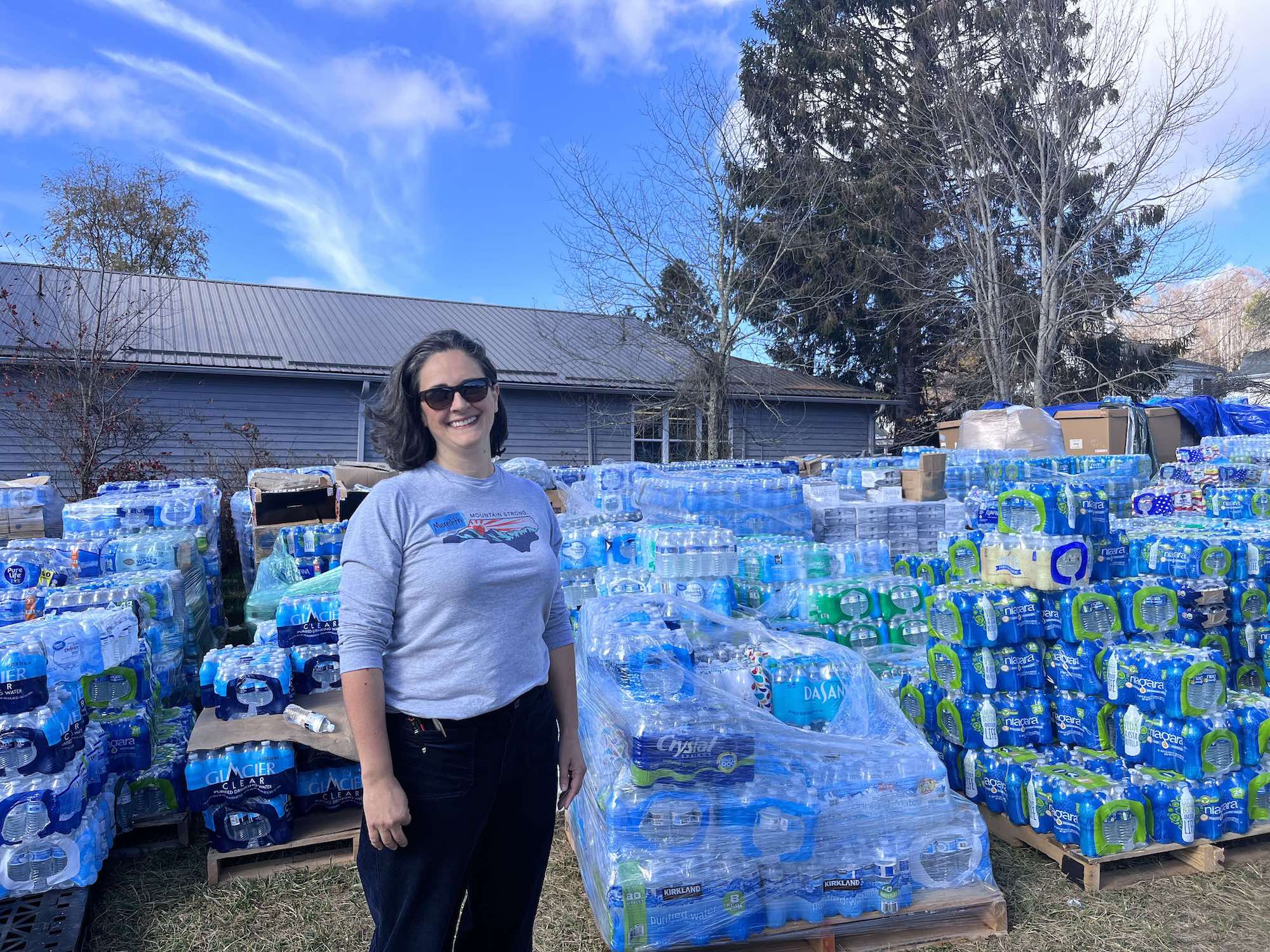
Even as these communities work nonstop to restore service, local and state officials are looking ahead to the next big storm. Members of the state Water Infrastructure Authority, a body tasked with financial planning for the state’s water and sewer utilities, gathered last month to ponder updates to North Carolina’s water infrastructure master plan. The document, created in 2017, explored ways of ensuring the financial stability of water utilities. Members of the panel, which includes several utility directors, a water engineer, and the head of the state Division of Water Infrastructure, acknowledged that local officials often have little idea how water and wastewater work and need help navigating the aftermath of a disaster and applying for grants to recover from it.
Experts on the subject said consolidating the region’s patchwork of small systems may be the key to rebuilding and maintaining them. Some are doing just that. Four counties in southwestern Virginia are working together to install dozens of miles of water lines. Such efforts are easier among towns that are close together, like Mars Hill and Weaverville. These small towns, which are rapidly becoming suburbs of Asheville, have linked their water systems so they can ensure there’s enough to supply new housing. That connection allowed Weaverville to quickly buy and move water when the flood knocked out its municipal system. A similar arrangement proposed for nearby Marshall would cost about $15 million.
A message from Grist
All donations matched for a limited time!
Grist is the only award-winning newsroom focused on exploring equitable solutions to climate change. It’s vital reporting made entirely possible by loyal readers like you. At Grist, we don’t believe in paywalls. Instead, we rely on our readers to pitch in what they can so that we can continue bringing you our solution-based climate news. Donate now and your gift will be DOUBLED. Join us as a $25/month donor or make a $300 one-time gift, and we’ll send you a limited-edition gift bundle as a token of our gratitude. It’s our way of saying thanks for supporting our work.




The dam did a controlled rupture no a gated release of water thus this will repeat no building should be replaced in the new water way for major storms.
Choosing to live in the willywags comes with consequences. You leave society behind, it returns the favor. Keeping these little dots alive is exceedingly expensive for state and federal taxpayers, who ultimately foot the bill for infrastructure improvements, including communication like internet . Thus we are all heavily subsidizing the Spruce Pines of the country . It’s another form of welfare for which these likely rightwingers will never accept responsibility